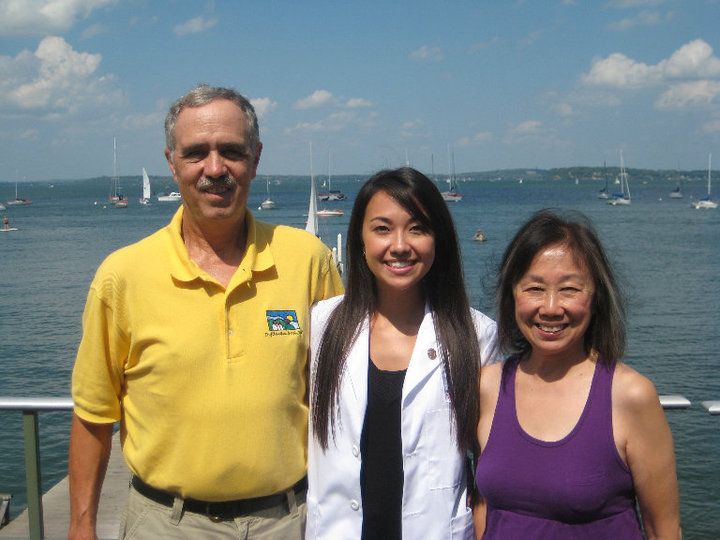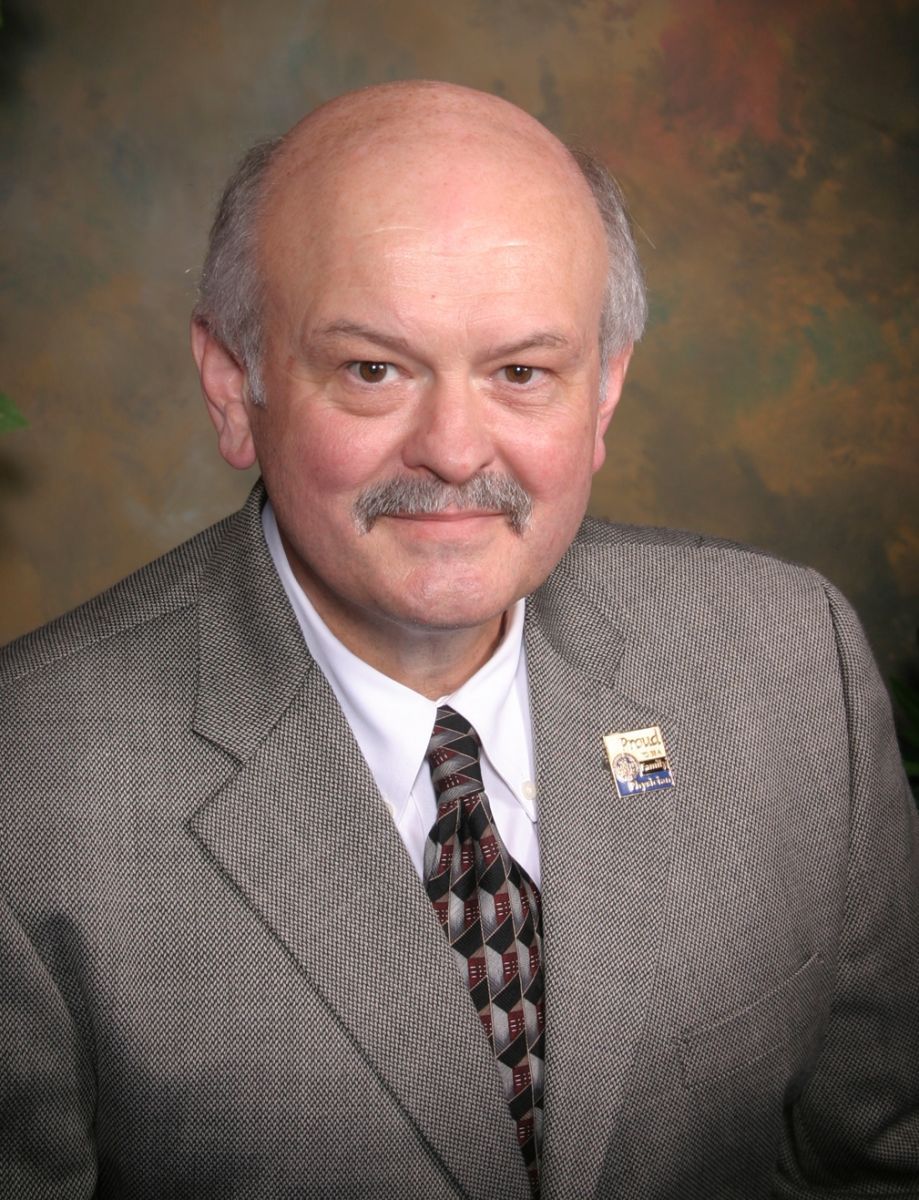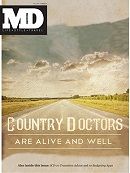Country Doctors Are Alive and Well
A look at physicians who have chosen to work in rural communities, where the closest secondary care center might be nearly 100 miles away and house calls are still a common occurrence.
Running out of gas usually isn’t a good thing, but it proved quite fortuitous for Tim Devitt, MD. It was more than 30 years ago when Devitt found himself short on petrol in Soldiers Grove, WI, a rural community off the Highway 14 corridor near Viroqua in the western part of the state.
“I looked around and said, ‘Well, this looks like a good spot,’” recalls Devitt, a retired physician who still makes patient house calls in the area’s Amish community and works at the Richland Free Clinic in nearby Richland Center. “There are a lot of hills and valleys. It just appealed to me from a standpoint of where I’d want to live.”
More than 30 years later, his daughter, Phoebe, is following in his footsteps.
Floods and solar energy

In the mid-1970s, the tiny village of Soldiers Grove, with a population of 592, according to the 2010 U.S. Census, experienced multiple floods as a result of its proximity to the Kickapoo River. The clinic where Devitt worked was located right in the middle of the flood plain.
“During the height of the flood I went down to our clinic in a motor boat,” Devitt recalls. “And when I went inside, the water was waist deep.”
Eventually, the entire village relocated to higher ground about half a mile away, and a new clinic that remains to this day was built. But in 1979, the U.S. was experiencing its second oil crisis in six years. A decision was made that all new commercial buildings built in the new village were required to achieve at least 50 percent of their heat through solar energy. That ordinance resulted in Soldiers Grove adopting the name of America’s First Solar Village.
Flooding aside, there are other challenges to running a medical practice in a rural community. Devitt explains that the closest hospital is 20 miles away, a trip he made routinely to see patients. The plus side? No traffic lights between Soldiers Grove and the hospital.
But the biggest challenge, he says, was working alone.
“For the vast majority of my professional career I was working by myself,” Devitt says. “I had a partner who worked with me, but he didn’t work the days I worked. He worked on my off days, and the vast majority of the time, otherwise, I was working alone. That has changed a little bit in the last 10 years or so with the addition of nurse practitioners and physician assistants. But still, you’re the top man on the totem pole, and so you’re professionally responsible for those people working under you. I’d spend a lot of time on the phone talking to my colleagues if I needed to speak with a specialist. And over the years I developed a good camaraderie with those folks, and they certainly made things a heck of a lot easier.”
Red cowgirl boots

What also made Devitt’s job a little easier, and day a bit brighter, was having his daughter, Phoebe, alongside when he made house calls, many of which were to the local Amish community.
“My father was a physician and he practiced in Milwaukee for more than 40 years,” Devitt recalls. “I tagged along with him quite a bit, and then my daughter began tagging along with me.”
Phoebe, a fourth-year medical student at the Wisconsin School of Medicine and Public Health, and a participant in the school’s Wisconsin Academy for Rural Medicine, a rural education program within the MD program curriculum, remembers those days well.
“Some of my earliest memories of going out on these house calls to the Amish were that I would always wear these shiny, red cowgirl boots,” Phoebe recalls. “So every time we went out I would slip on my cowgirl boots, I’d throw the screen door open and chase after my dad. And when a car pulled up to an Amish house it was a big deal. So, as we pulled up, all the little kids would start peaking out the windows, and my dad and I would get out of the car and start walking up to the house. And they would look at me, but even more they would look at my red cowgirl boots. And they came to remember not me but my cowgirl boots. It’s sort of my own personal childhood version of the white coat.”
Phoebe has since discarded her red cowgirl boots, but has no intention of deviating from her father’s career path. As an undergrad and while in medical school she spent time in a larger city, but has found that she’s truly a country girl at heart. Upon completing her residency, she plans to move back to Soldiers Grove, purchase her parents’ home, and pick up her father’s practice.
“I specifically remember a gentleman coming up to my dad just to chat, and [my dad] let the man know I had recently gotten into medical school,” Phoebe says. “The man turned to me and said, ‘Well, consider me your first patient. We need more doctors like your dad around here.’ And it’s really a driving force for me, and one of the rewards of practicing medicine in a rural area.”
Thriving in Montana

Gregory Rice, MD, knew by the time he was 18 that he could not commute in an automobile.
“My brain, somehow, doesn’t tolerate that,” he says.
His options following residency at Providence Hospital in Seattle were to live in an inner city area where he could commute by walking or mass transit, or to settle in a rural area where he could ride his bicycle to the office. For Rice, who grew up in Spokane on the eastern side of Washington state, nestled between the Cascade Mountains and the Rocky Mountains, the decision was a no-brainer.
“My wife and I felt like we wanted to be in a community that had community spirit, had a history, a central downtown, had reasonable schools, and a small hospital; that’s what we looked for,” Rice explains. “Both of us were kind of service-oriented people, and we wanted to go to a place where we felt like we could participate in the community and make a difference; see a difference.”
They settled in Libby, MO, a city of 2,628 residents based on the 2010 U.S. Census, and the county seat of Lincoln County in the far northwest corner of the state. And they’ve never looked back.
Making a difference
It didn’t take long for Rice to begin giving back. He opened his practice in 1977, and one year later hosted his first family practice resident. His philosophy is that after spending years in education it’s only natural to continue on that track. Perhaps more importantly, Rice enjoys teaching.
“Students come here for a month after their first year of medical school just to be able to see lots of patients,” Rice says. “There are fewer student residents here, so they’re always participating. They’re not just standing back and watching.”
Rice, who was named Montana Family Physician of the Year in 2011, has worked with the Montana Rural/Underserved Opportunities Program since 1991. He has been a WRITE preceptor since 1997 and a preceptor in the TRUST (Targeted Rural Underserved Track) program since 2009. Both programs focus on helping to meet the need for rural primary care physicians in the Washington, Wyoming, Alaska, Montana and Idaho region.
“I really get to be a clinical instructor, which is what I love doing,” Rice says. “It’s a huge responsibility, but I love watching students grow.”
There are challenges, to be sure. Libby is located 160 miles from Spokane, which Rice says is the nearest tertiary care center. Kalispell, a secondary care center with a 100-bed hospital, is 90 miles away.
“That’s a lot of gasoline for people, so they prefer to get their health care locally,” Rice says. “My philosophy is: what would I do in a big city? I try to do the same thing with patients locally.”
And then there are the pluses.
“I get lots of hugs, lots of cards, lots of direct thank yous,” he says. “And just the joy of doing things.”
Deep in the heart of Texas

For Doug Curran, MD, life has been like John Mellencamp’s 1985 hit “Small Town.” Curran grew up in a small town in northwest Arkansas, and knew he wanted to live and practice in a small town.
Sidney Ontai, MD, MBA, took a more circuitous route, including a stint as chair of the Department of Family Medicine at the University of Southern California.
Today, both practice in rural communities in Texas — Curren at Lakeland Medical Associates in Athens; Ontai with a community clinic in Plainview. And neither has any regrets with the way things have turned out.
Delivering children of children
Curran has been in Athens, named the Black-Eyed Pea Capital of the World, for nearly 35 years. He calculates time by pointing out that he is now delivering babies of the same women he helped deliver 30 years ago. That’s one of the reasons he keeps doing what he’s doing.
“All of these patients have become my friends, and I love working with them,” Curran explains. “I love taking care of them. I know their families, I know their kids and grandkids, in-laws and outlaws and everybody else. And I really enjoy that. It’s what I wanted.”
Medical residents also become enmeshed in the community. Curran will take them to a church activity, to the little community theatre, or to an event at the community college. One resident was from a rural community in Alabama. Curran asked if she wanted to attend a farm bureau meeting. She went, had a positive experience, and is now considering moving to Athens to start her career.
Curran says he loves the town’s community spirit, where everyone pulls together to help out each other. But make no doubt about it, he adds: Athens is a rural community.
“I cannot send my patients to the medical center or to the country hospital,” he explains. “We are the county hospital. So we see all comers and we take care of everyone. Of course, our hospital gets additional money from the federal government, and the hospital has worked with us to provide clinics and an environment where we can take care of people who don’t have any resources. So, it’s a partnership. But you can’t come to a small town unless you’re prepared to take care of all comers, and that includes people who can’t or won’t pay you. And it’s okay. It’s what you do, because that’s where you live.”
Movin’ out
Ontai was born in Milwaukee, but lived there for just one year. When his father graduated medical school, the family moved to California where he did his residency. By age 6, the family moved to Hawaii, where his parents had been born. He attended college at Harvard, came back to the University of Hawaii for medical school, then back to southern California to complete his residency in family medicine. But it was a large research grant from the National Library of Medicine to do telemedicine on Catalina Island, approximately 30 miles off the coast from Los Angeles, that turned things around.
“USC family medical faculty would do one-week stints out there, at the one little hospital, which had an attached nursing home and a little clinic, and that was it,” Ontai says. “It’s very isolated; you can only get back and forth on a boat. But I found that I really liked it. The telemedicine thing was intriguing. And I had just come to a point in my life where I just wanted to take care of patients more and I didn’t want to do the administrative stuff.”
He accepted an offer to practice in Plainview in 1998, and the timing couldn’t have been better. Medicare legislation had just been passed to fund telemedicine in health professional shortage areas. It turned out that virtually every town around Plainview was designated a health professional shortage area.
“I put these telemedicine clinics out there, got them funded, and they’ve been up and running now for 15 years,” Ontai says. “It’s a nice addition to the practice.”
Challenges and benefits
Ontai says that Plainview has been very welcoming to his family, but points to the challenge of “standing out.”
“I’m this Asian guy,” he says. “I did a census pull online and I looked at racial breakdowns. And it turned out that when my family moved to Plainview we increased the Asian population in Plainview by 25 percent. So, there’s a certain percentage of patients that just won’t relate, so that was a challenge. I really had to prove myself.”
Which he did, and now Ontai says he can’t go anywhere without seeing two or three patients. There’s also a different, very special way in which people show their gratitude.
“When my wife had to have a hysterectomy, all these people brought food for us,” Ontai says. “It’s like turning back the clock a bit to a time where people know each other and look out for each other. That’s a nice, non-quantifiable perk.”
